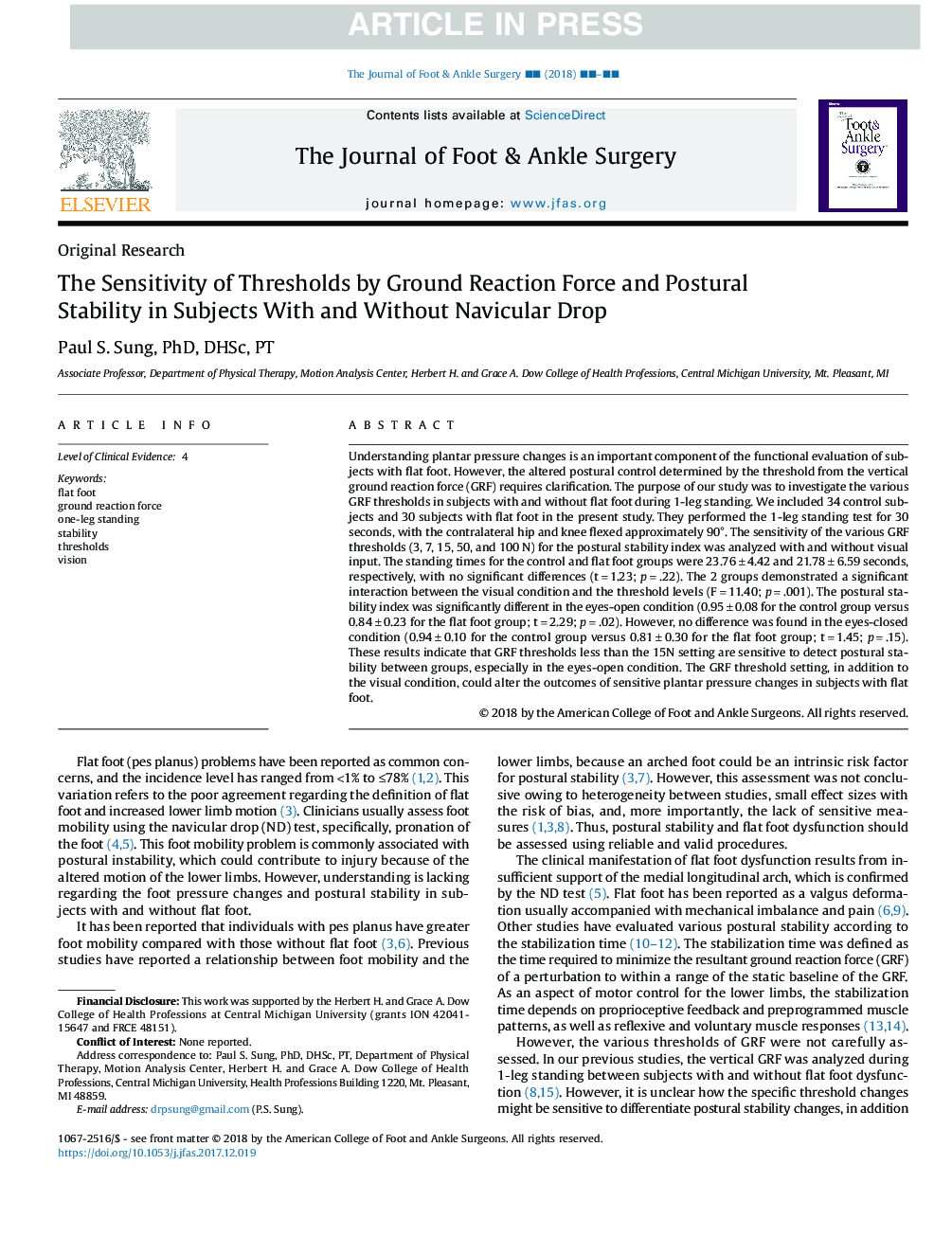| Article ID | Journal | Published Year | Pages | File Type |
|---|---|---|---|---|
| 8602849 | The Journal of Foot and Ankle Surgery | 2018 | 5 Pages |
Abstract
Understanding plantar pressure changes is an important component of the functional evaluation of subjects with flat foot. However, the altered postural control determined by the threshold from the vertical ground reaction force (GRF) requires clarification. The purpose of our study was to investigate the various GRF thresholds in subjects with and without flat foot during 1-leg standing. We included 34 control subjects and 30 subjects with flat foot in the present study. They performed the 1-leg standing test for 30 seconds, with the contralateral hip and knee flexed approximately 90°. The sensitivity of the various GRF thresholds (3, 7, 15, 50, and 100 N) for the postural stability index was analyzed with and without visual input. The standing times for the control and flat foot groups were 23.76â±â4.42 and 21.78â±â6.59 seconds, respectively, with no significant differences (tâ=â1.23; pâ=â.22). The 2 groups demonstrated a significant interaction between the visual condition and the threshold levels (Fâ=â11.40; pâ=â.001). The postural stability index was significantly different in the eyes-open condition (0.95â±â0.08 for the control group versus 0.84â±â0.23 for the flat foot group; tâ=â2.29; pâ=â.02). However, no difference was found in the eyes-closed condition (0.94â±â0.10 for the control group versus 0.81â±â0.30 for the flat foot group; tâ=â1.45; pâ=â.15). These results indicate that GRF thresholds less than the 15N setting are sensitive to detect postural stability between groups, especially in the eyes-open condition. The GRF threshold setting, in addition to the visual condition, could alter the outcomes of sensitive plantar pressure changes in subjects with flat foot.
Related Topics
Health Sciences
Medicine and Dentistry
Orthopedics, Sports Medicine and Rehabilitation
Authors
Paul S. PhD, DHSc, PT,
